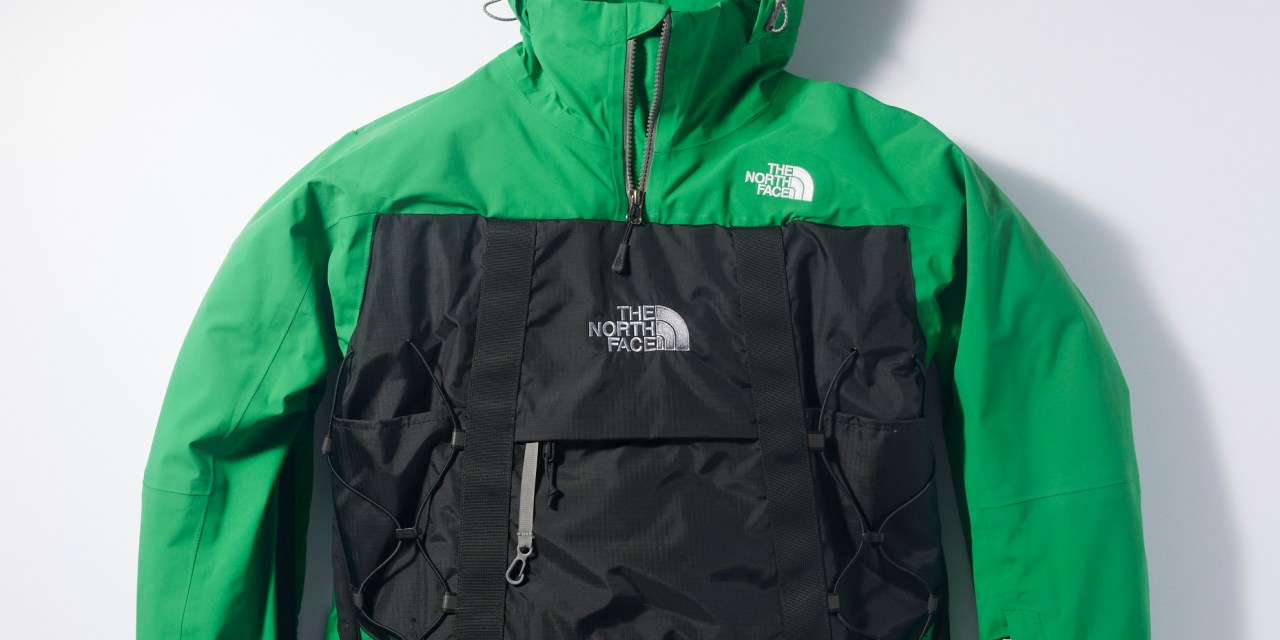Gorpcore brands are becoming more mainstream

While outdoor gear sales spiked in 2021, demand doesn’t seem to be dying down. In some cases, fervor for so-called gorpcore has only ramped up.
Last month, The North Face marked its 10th consecutive quarter of double-digit constant revenue growth. Teva’s annual sales went from $138 million in 2020 to $138.8 million in 2021, then $162.7 million in 2022 to $183.1 million in 2023. Brooks Running achieved record revenue in both 2021 and 2022. And, Amer Sports — the parent company of Salomon, Arc’teryx and Wilson — says it’s “making steady progress” on turning those three brands into €1 billion companies.
All of these brands belong under the umbrella of gorpcore, a term coined by The Cut’s Jason Chen in 2017 to describe an outdoorsy, utilitarian aesthetic. Shoppers interested in gorpcore — which is named after the term for trail mix (“Good Old Raisins and Peanuts”) — gravitate towards performance-driven, practical pieces like packable puffer jackets, adjustable hiking pants, oversized ponchos and waterproof sandals. The category remains strong, especially on the runway and in the resale market, and gorpcore brands continue to churn out new styles to appeal to their avid fans.
Beth Goldstein, footwear and accessories industry analyst at Circana, described gorpcore as a take on “the idea that you look like you’re working out, even if you’re not.” In this way, gorpcore is similar to athleisure like leggings and sweatshirts, she explained. Sales of athleisure spiked in the pandemic as people spent time outside, and while some people are back to the office, “that interest is still there, and the fashion element is still there,” Goldstein said.
While athleisure is still popular among shoppers, its biggest brands have varying levels of success. Lululemon reported a 24% increase in net revenue from the first quarter of 2022 to the first quarter of 2023, and Beyond Yoga saw its net revenue jump 28% during its second quarter. Athleta’s net sales, on the other hand, dropped 11% during its first quarter due to what Gap Inc. called “continued product acceptance challenges.”
Gorpcore has been around for years, even if it wasn’t necessarily called that. But now, more retailers are jumping on the gorpcore bandwagon. “You’re really seeing it across a spectrum of different types of brands and different price point tiers,” Goldstein said. Neiman Marcus, for example, recently featured camping gear in its store windows, while Crocs is rolling out more rugged styles. Prada, Louis Vuitton and Balenciaga have featured gorpcore in their fashion shows, while Nike’s ACG (“All Conditions Gear”) can be found at Nordstrom and on Amazon.
In fact, gorpcore brands are some of the top performers on the resale platform StockX, according to its newest “Brands Making Moves” report, which covers January-July 2023. Among sneakers, On Running is up 15,357% year-over-year, while Salomon is up 202% and Asics is up 72%. Birkenstock, whose parent company is preparing for an IPO next month at an $8 billion valuation, is up 492% since the same time last year.
Ad position: web_incontent_pos1
Drew Haines, merchandising director at StockX, attributes some of this growth to buzzy collaborations. Rihanna wore a pair of chunky red sneakers from the MM6 Maison Margiela x Salomon collection during her Super Bowl performance. On dropped its third collaboration with Loewe in March, while Salomon rolled out a collection with Sandy Liang in May and with JJJJound in June. Asics, which collaborated this year with Brain Dead and Dime, had its best month ever on StockX in July. StockX expects the brand to lap this growth in August.
Right now, gorpcore brands are “taking that playbook that has been so successful for the Nikes and the Supremes of the world,” Haines said. “These cultural figures, these artists… they carry a lot of weight with that consumer that’s invested in the fashion element of these products. And so, they [brands] are using that to their advantage.”
There’s another reason why shoppers might be interested in gorpcore, Kassi Socha, director analyst at Gartner, said. Many gorpcore brands such as Patagonia, Arc’teryx and The North Face have warranties around product quality and life cycle. The North Face is one of StockX’s staple brands, while Arc’teryx is up 4,000% year-over-year on the site, Haines shared.
That durability is especially important now that many households have limited discretionary funds, Socha told Modern Retail. “They care more about quality, and where they’re finding quality is in brands like Patagonia, Birkenstock — some of the tried and true gorpcore brands,” she said. A recent Gartner survey found that consumers rank quality as the number two factor behind price in deciding whether to make a purchase.
Socha likens gorpcore to quiet luxury, a newly-hyped category of fashion that emphasizes investment pieces and minimalist clothing. “Consumers are caring less about the logo that they’re showing off and caring more about the quality of the item,” Socha said. “So, in the same way that quiet luxury is taking off amongst luxury brands, gorpcore is taking off amongst mono brands.”
Ad position: web_incontent_pos2
Ultimately, when it comes to gorpcore, “I think everyone’s realizing that this is a trend, but it doesn’t feel like it’s gone through this trend cycle of, it was popular, and now it’s out,” StockX’s Haines said. “It feels like it’s gone through this trend cycle of, it’s popular, and now these brands that rode that wave are becoming mainstays in the space.”

